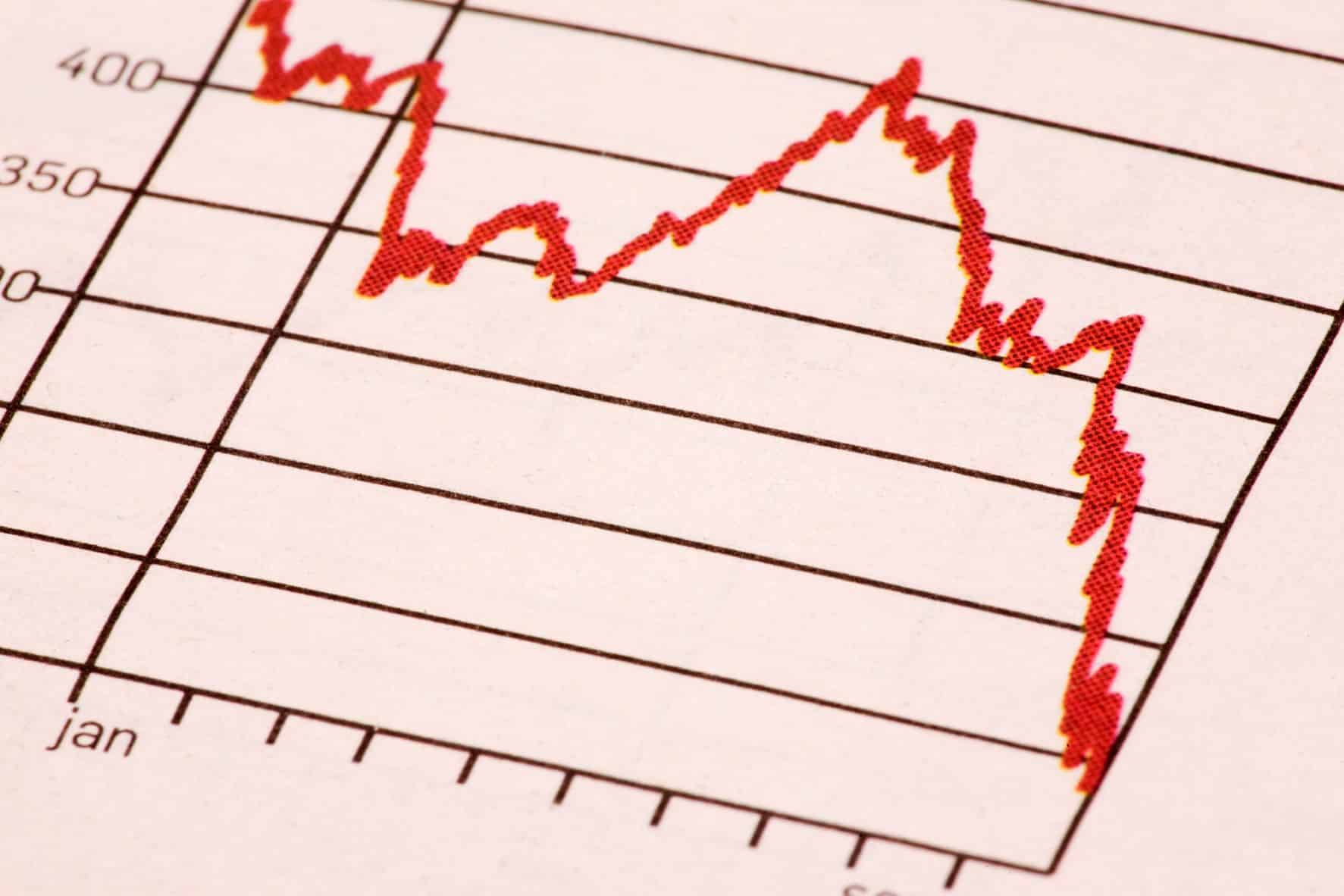Cryptocurrency is at the forefront of accessible investments. The market is growing, too, with a more diverse range of currencies emerging. While Bitcoin gets a lot of press, alternatives such as Etherium and even Dogecoin continue to make a significant impact. Nevertheless, as with any investment, this asset class is not without risks — decentralized currency markets are extremely volatile and vulnerable to crashes.
A crypto market crash occurs when either a certain cryptocurrency or the entire cryptocurrency market experiences a sudden and significant drop in value. While this can have a devastating effect on your investment portfolio, it is possible to predict and mitigate crashes to some extent. There are several factors that can influence a crypto crash and you can best prepare by understanding them better.

Let’s take a closer look at the major causes of crypto crashes and some steps you can take to protect your investments.
Why Does Crypto Crash?
There will be times a crypto crash occurs because of a single cause. Other times, a crash will occur due to a combination of influencing factors. To predict the next crypto crash, you’ll need to develop a solid impression of what these risky elements are.
Here are some of the primary factors that contribute to crypto crashes.
Investors Taking on Leverage
Leveraging is a way for investors to extend their crypto buying and selling power by borrowing additional funds. Problems can arise here when investors take on too much leverage. This is because even a slight drop in crypto value on a high leverage investment can represent a significant loss for the investor. This can result in the need to sell more currency, potentially influencing a further drop in the market value. When this occurs on a large scale, a crypto crash can occur.
The crypto market can be particularly vulnerable to leverage issues as many crypto trading accounts offer account holders leverage of up to 10 times the funds deposited. This accessibility can mean a lot of inexperienced and enthusiastic investors are leveraging too much, which puts the market in a more volatile state.
Mass Liquidation (Lack of Liquidity)
Mass liquidity occurs when investors or brokers close out positions on an asset on a large scale. This could occur because the crypto price has peaked and a lot of traders want to cash out to make a profit. It could also arise if the price of crypto begins falling and traders or brokers want to minimize losses, contributing to the slide.
Crypto can be particularly vulnerable to this form of liquidation due to it being a highly volatile market, with even slight fluctuations causing traders to react. This is one of the reasons traditional, more stable assets can be better investments in the long term.
A lack of liquidity can also be problematic. There will be times some crypto securities will be difficult to sell. This can force investors to trade for lower prices. When this occurs on a large scale, it can cause a drop in the market value.
Regulations
Part of the reason governments have been slow to regulate crypto compared to more traditional assets is their difficulty in defining it. Even government departments disagree on its classification. The IRS considers it property while the Commodity Futures Trading Commission (CFTC) classifies it as a commodity. However, this doesn’t mean the international crypto market is immune to the effects of regulation.
The presence or speculation about stringent regulation measures can cause crypto to lose market value. When China announced new regulations which effectively banned mining in 2021, the crypto market lost $400 billion in value over a single weekend. Investors are understandably concerned about the effects of regulation. As such, government planning on the subject could prompt liquidation, potentially resulting in more crashes.
Security Breaches
Among the most significant concerns at the moment is the presence of crypto-mining malware. This is where cybercriminals infect the computers or networks of victims and use their processing power to mine large amounts of currency. This can inflate the amount of a certain currency on the market, causing its value to drop.
Even the public perception of cybersecurity issues can influence crypto market drops. If there have been recent breaches targeting specific currencies or brokers, fewer traders are likely to invest. This impacts the value, which can have liquidation consequences.
Media Influence
One of the reasons cryptocurrency has become such a prevalent investment focus is due to its public profile. Unfortunately, this also means the media can also have a significant influence on crypto markets and can potentially cause crashes.
Popular public figures have used this to their advantage. Elon Musk has previously manipulated the market value of both Bitcoin and Dogecoin via social media posts. A single tweet from Musk prompted more people to invest in Dogecoin, temporarily raising its market value significantly. Though the resulting mass liquidation later caused the value to swiftly fall. Musk’s statement that Tesla wouldn’t accept Bitcoin caused the cryptocurrency’s value to plummet significantly, too.
Media can play a valuable role in demonstrating to the public that crypto is volatile, which may prompt new traders to use more caution. However, it can also artificially inflate currencies in hazardous ways to the market.
Stock Market Downturns
There is a tendency to think of the traditional stock market and the crypto market as independent entities. However, they can have a mutual influence on one another. This is largely due to how companies linked to the traditional market are facilitating crypto engagement.
For instance, Visa recently partnered with Tala to provide customers with access to USD Coin, which is backed by the U.S. dollar. This allows Visa to issue cards with a crypto wallet that consumers can use to make purchases. Partnerships like these can boost the value of both the currency and the companies involved. However, it’s important to recognize that such businesses are already vulnerable to traditional market fluctuations. This could have a knock-on effect on the value of the crypto they provide access to.
How to Predict When Crypto Will Crash
There is never a guarantee your investments will result in profit. However, taking the time to carefully analyze the following metrics can help you detect the potential for oncoming crypto market crashes.
Market Value to Realized Value
Market value to realized value (MVRV) is a method to better understand an asset’s most likely true worth. You first calculate the market capitalization, which is the total number of mined crypto coins multiplied by the current price of each coin. You then divide this value by the realized capitalization, which is the average price paid for coins across the entire crypto network.
This equation provides a useful metric, as it gives some indication about the direction of liquidation potential. When the MVRV suggests a currency is toward a higher valuation (usually 3.5 and above, but this can depend on the coin), it could suggest people will soon liquidate en masse to take advantage of the gains.
Realized Cap HODL Waves
Realized cap HODL (or, hold on for dear life) waves in crypto investing is used to establish the value of coins at different points in their distribution life cycle. It also gives an accurate and detailed view of the presence of older or matured coins and the movement of younger coins in the market. Calculating this is made possible by the blockchain ledger system that makes all historic transactions and values visible.
So how is this useful in understanding the potential for crypto market crashes? Well, coins in older brackets are usually owned by HODL traders who are using a longer-term, smarter investment strategy. Coins that frequently move between younger brackets (6 months or less) are those dealt with by short-term investors. By comparing the waves of both of these markets, you can see patterns of rising and falling selling behavior along the timeline. While this isn’t a guaranteed predictor, it can help you make more informed decisions about avoiding losses and crashes following peak liquidation times.
Reserve Risk
Reserve risk is a metric directly related to the risk and reward ratio for buying crypto at a given time. Essentially, it measures the level of confidence traders have in a currency compared to the current price of the coin. When displayed on a chart, you can view the fluctuations in the conviction HODL traders have for resisting the temptation to sell at high price times.
The calculation to determine this comes down to dividing the current U.S. dollar (USD) price of the currency by the HODL bank. The HODL bank refers to the unspent opportunity cost, which ascribes value to the length of time investors have avoided selling. The reserve risk is high when the confidence level is low and the price is high. The reserve risk is low when the opposite occurs.
This is a useful chart to maintain because it can provide you with an advanced warning on the direction of selling behavior. As you approach high reserve risk points, liquidation is likely to rise, which could be followed by steep drops in value.
Outflow and Inflow
Outflow and inflow relate to the direction of coin movement on crypto exchanges. Inflow describes the number of coins heading toward wallets, while outflow measures the opposite. There are various trackers for these metrics and exchanges themselves can provide this information to traders, too.
Where crypto market crashes are concerned, the outflow and inflow can highlight fluctuations in supply and demand. Periods of high outflow can suggest a decrease in supply. This is because traders are confident enough in the market that they’re removing their coins from the exchange for long-term storage and maturation. High inflow, on the other hand, suggests traders are keen to sell and even trade on derivative markets. By studying the movement of inflow and outflow, investors can better track oncoming mass liquidation and potentially the next crypto crash.
Preparing For The Next Crypto Crash
It’s important to remember you’re never going to be able to predict a crypto market crash in a way that’s 100% accurate. As is the truth with any kind of market, the best the above-described metrics can do is help you make more informed decisions. Another way investors can mitigate the risks is by taking some solid proactive measures, including the following.
Conduct Market Research
Social media can be a good resource to start with. Look at the profiles of each cryptocurrency and see what people are saying about it and how they describe their experiences trading with it. Check out the profiles of experts in crypto trading, too, to see what their recommendations are.
You can’t just use others’ opinions, though. Keep a logical mind and track the numbers. Look at various exchanges over some time to see how the value and movement of each coin are progressing. Look at what currencies have seen a significant amount of liquidation recently. Identify which coins HODL investors seem to stick with for a long period. This helps you avoid potentially poor investments.
Remember to maintain your market research even after you’ve invested. The better informed you are, the better you’ll be able to respond to fluctuations.
Diversify Your Portfolio
One of the biggest mistakes you can make in crypto trading is sticking with a single coin. When a crash occurs, it doesn’t tend to affect the whole market in exactly the same way (though it can). Certain coins are usually hit harder than others. By maintaining a diverse portfolio that incorporates a variety of asset types, you can spread your risk more prudently.
This could include trading in a selection of different coins, or incorporating traditional stock options alongside your crypto coins. Even investing coins from projects in different parts of the world can safeguard you against local issues impacting the value of a specific currency.
The truth is that investing in crypto, like any other investment, comes with risk. The more you can understand this risk and strategize against it, the more positive your experience is likely to be.




